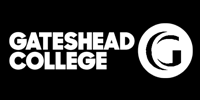Live Industry Consolidates
Earlier this week, live entertainment giants Live Nation announced the acquisition of a controlling stake in regional UK promoter Cuffe and Taylor. Despite sounding a bit like a custard brand from the 1970’s, Cuffe and Taylor are an independent success story- the company promoted Rod Stewart’s 2016 UK stadium tour alongside shows from artists such as Tom Jones, Bryan Adams and Little Mix. They have programmed Scarborough Open Air Theatre since 2016, successfully reviving the venue alongside promoting Lytham and Greenwich Music Time festivals.
Commenting on the deal, Live Nation President and CEO Michael Rapino said: “Our mission at Live Nation has never been clearer. We want to connect fans with the artists they love, and through this deal with Cuffe & Taylor we are able to offer fans in the UK, more choices than ever before”.
This was the fourth major acquisition made by Live Nation in January including bringing Metropolis Music into the fold. They now control over 80 festivals worldwide including Governors Ball, Lollapalooza, Bonnaroo, Austin City Limits, Electric Daisy Carnival, Reading and Leeds alongside a portfolio of 165 venues and an increasing interest in artist management.
In fact, if you were tracking the global footprint and market share of the company, you would need to update it on an almost daily basis.
They are not the only ones. As reported last year, Global Live made a strong entry into the festival market with various acquisitions and it seems that we are heading towards a climate where the majority of the market will be controlled by two or three majors players. Lets not forget AEG Live, whose activities include the operation of the O2 arena and British Summer Time festivals in Hyde Park.
Everybody wants to rule the world but what are the implications of this? Is it such a bad thing? A couple of thoughts:
1) The live market is competitive and margins so tight. Exclusivity deals on talent are essential as a selling point, especially for major events. Bidding wars between major entities falsely inflate the value of talent and most agents and artists will make hay while the sun shines.
2) A diverse live market with many operators and entrepreneurs is a healthy one for artists- grassroots venues and festivals are effectively the incubators for emerging talent and not all of those opportunities can be delivered by two or three major operators. So, is this truly offering fans “more choices than ever before”?
There is a counterpoint to all of this- more immersive and experience based events such as Boomtown are thriving. Such events are multi arts and not reliant on headline talent, they have taken themselves out of the arms race almost entirely and are experiencing incredible growth. There is certainly an appetite for events outside of the major festivals and arenas.
Major operators are both inevitable and essential to the market (to quote Walter White in Breaking Bad: “Do you really want to live in a world without Coca Cola?”) but as consolidation increases and the customer becomes more interested in the supply chain, no-one wants to live in a world where Coca Cola is the only option.
Address
Coronation House, 65 Quayside, Newcastle Upon Tyne, NE1 3DE
Telephone
07955289085
Connect with Generator
© Generator 2025 - All rights reserved.
Delivered with Cargo Creative




















